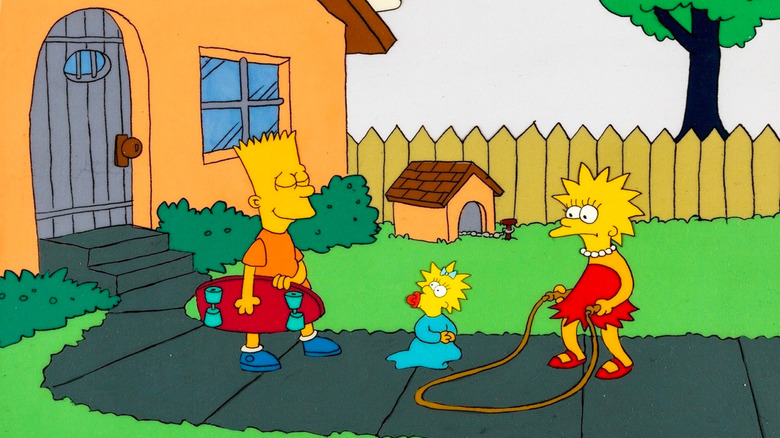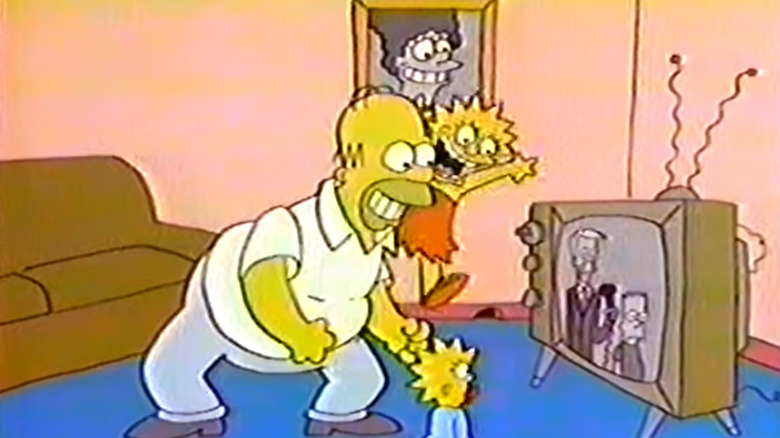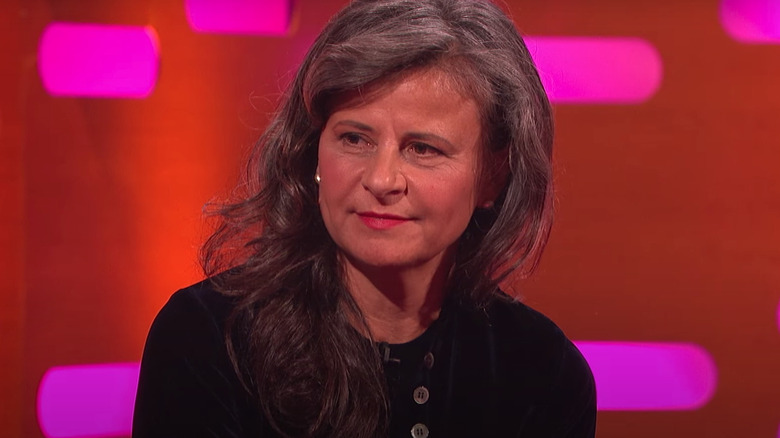Tracey Ullman's Dislike Of The Simpsons Nearly Led It To An Early Grave
Before "The Simpsons" aired as its own show in December of 1989, it was originally a recurring short on "The Tracey Ullman Show." After appearing occasionally in season 1, the popularity of the segments led to Matt Groening's "The Simpsons" getting a spot in every single episode of seasons 2 and 3. By season 4, "The Simpsons" were no longer part of the variety show, as by that point Fox had promoted the family to their own half-hour time slot as an animated sitcom.
Now on its 34th season (or 734th episode), "The Simpsons" owes a lot to Tracey Ullman, whose show got the soon-to-be iconic family on TV for the first time. It's why it's a little surprising to learn that Tracey herself wasn't that big of a fan of their original shorts. "Tracey was not fond of The Simpsons," said Ken Estin, a TV producer who co-created "The Tracey Ullman Show." "She was not fond of any of the bumpers, because she didn't think they were the quality of her show."
Ullman wasn't the only one who wasn't thrilled about the Simpson family. Garth Ancier, President of Fox Entertainment at the time, claimed that there were a lot of corporate people at Fox who wanted to cut them, mainly due to the price of animation. "It cost $15,000 a week to make the animated bumpers," he said.
To be fair...
It's hard to blame Ullman for not being a huge fan of "The Simpsons" at the time, because those shorts were almost nothing like what the show would look like at its height. There's the obvious stuff, like the fact that the animation is much cruder and Homer's voice is different, and then there's the writing for all the characters. Lisa is much less of a bookworm in these shorts, for instance; she's almost as much of a troublemaker as Bart. Early Homer is a sterner, far more intelligent father. Really, the only character who seems mostly the same is Bart, who maintains his spiky hair and rebellious attitude throughout the main show.
Although the characters in these original shorts had the same names and the same general character design, they weren't really the Simpsons we've all gotten to know over the past thirty years. There are not even any of the hundreds of memorable side characters throughout Springfield that helped make "The Simpsons" so long-lasting. (The first recurring secondary character is Krusty the Clown, who shows up in the thirty-fifth short.) Even after it became its own show, most fans agree that it wasn't until around season 3 that it was firmly in its golden era.
It makes sense that back in 1987, pretty much nobody involved in the variety show had any idea just how much potential "The Simpsons" had. Except for maybe Fox President Ancier, who couldn't quite his put his finger on it. "They're onto something here," he recalled saying. "I don't know what it is, but they're onto something."
'I breast-fed those little devils'
By the early 1990s, "The Simpsons" were a hit. "Who knew!" Ullman said in a 2016 interview on "The Graham Norton Show," when asked about the cartoon's origins on her show. "I knew it was big, I think I went to Italy the next summer on my holiday [and people] were like, 'Simpsons, baffo!'"
Though Ullman hadn't been a fun of the animated bumpers, she still felt like she was owed a cut of the series' success since "The Simpsons" had gotten started on her show (she famously joked at the 1990 Emmy Awards, "I breast-fed those little devils"). In 1992 she sued 20th Century Fox on the basis that her contract had granted her 5-10% of net receipts from "series characters" created for her show. Per Variety, the lawsuit would have brought her over $2.25 million in profits from Fox, but the Supreme Court ultimately rejected her claim after less than five hours of deliberation.
More recently, Ullman hosted the comedy shows "Tracey Ullman's Show" and "Tracey Breaks the News" on British TV, and guest-starred in "Curb Your Enthusiasm" season 11 as politician Irma Kostroski.


